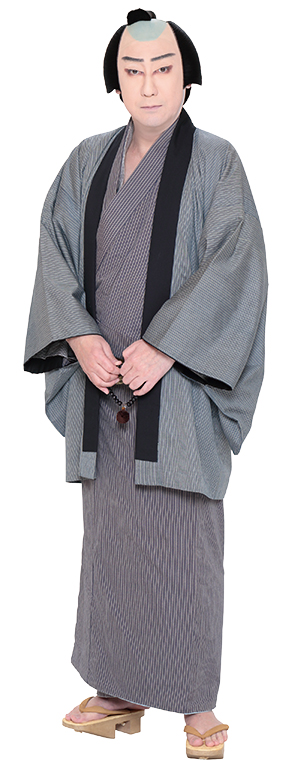 A unique, intricate and mesmerising combination of traditional dance, drama and musical accompaniment, Kabuki remains a quintessentially Japanese form of entertainment.
A unique, intricate and mesmerising combination of traditional dance, drama and musical accompaniment, Kabuki remains a quintessentially Japanese form of entertainment.
The language barrier, however, has sometimes made it difficult for non-Japanese audiences to grasp all the nuances of an art form with a history that can be traced back more than four centuries, but which remains today the most popular form of traditional Japanese drama.
The National Theatre, located alongside the outer moat of the Imperial Palace, is aiming to make Kabuki more accessible by hosting a one-day appreciation event, Discover Kabuki, in June.
Kabuki came into existence around 1603 with the arrival in Kyoto of a troupe of dancing girls led by Izumo no Okuni, formerly a shrine maiden. Their dances created a sensation and were labelled kabuki, which, at that time meant unorthodox or eccentric.
Such troupes of women were subsequently banned, as were those of the dancing boys that took their place.
They were succeeded by groups of adult men whose performances developed into the Kabuki of today. In the process, the original Chinese characters of the word were changed to convey the meaning of song (ka), dance (bu), and technique/skill (ki).
Designed to give overseas participants a better understanding of the history, storylines and characters appearing in the plays, Discover Kabuki is divided into two parts.
The first, “How to Appreciate Kabuki in English”, will be hosted by renowned Kabuki actor, Nakamura Mantaro, and TV personality Kisa Ayako. They will provide background information to set the stage for the second part, a live performance of Sakanaya Sogoro, part of the famous tale Shin Sarayashiki Tsuki no Amagasa.
This play is a Sewamono, a Kabuki work based on the lives of tradesmen in the Edo Period, written by the great Kabuki dramatist Kawatake Mokuami. The distinctive feature of Mokuami’s literary style is its musical superiority. He effectively interwove Kiyomoto-style music with poetic speech in shichigocho (alternating verse lines of five and seven syllables) while realistically depicting the lives of common people in the Edo Period.
During a career spanning almost 50 years, Mokuami created more than 350 works, including dance dramas, which still form a large portion of the Kabuki repertoire.
In Sakanaya Sogoro, the title character, Sogoro, has overcome a drinking problem. But when he receives news that his sister—who has been taken as a mistress by her employer—was killed due to a misunderstanding, he has a relapse. Despite the efforts of those around him to prevent it, he turns violent and falls back into alcoholism.
Mokuami’s musical mastery is on full display during the scene that depicts this action. The second act begins with Sogoro visiting his sister’s employer. The long, intoxicated speech that ensues is a highlight of the play.
With unparalleled value and quality of performance, this may be the perfect opportunity to see Kabuki for the first time.
National Theatre (large theatre)
Friday, 17 June, 2016
First performance: 2pm
Second performance: 7pm
Students: ¥1,300
Adults: first grade: ¥3,900; second grade: ¥1,500
- 20% discount is available for those with disabilities.
- Audio guide rental fee is included in the ticket price. Japanese, English, Mandarin Chinese and Korean guides are available.
- Sakanaya Sogoro will be performed in Japanese with English subtitles.
- Online Bookings: (Adult tickets only) http://ticket.ntj.jac.go.jp/top_e.htm
http://ticket.ntj.jac.go.jp/m (for mobile access, in Japanese only) - Phone bookings: call 0570-07-9900 or 03-3230-3000





